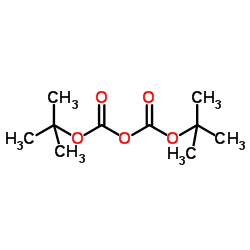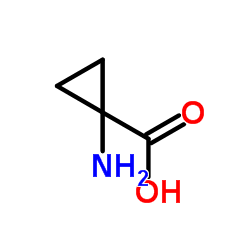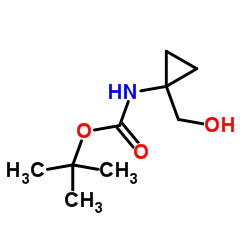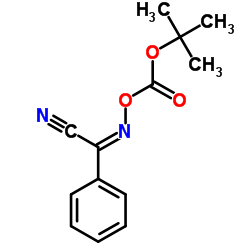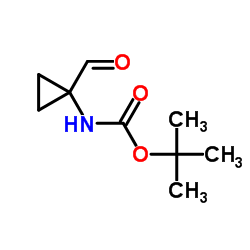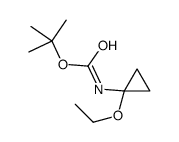88950-64-5
| 中文名 | Boc-1-氨基环丙基甲酸 |
|---|---|
| 英文名 | 1-(Boc-amino)cyclopropanecarboxylic acid |
| 中文别名 |
Boc-1-氨基环丙烷羧酸
1-Boc-氨基环丙烷羧酸 N-Boc-1-氨基环丙甲酸 1-(Boc-氨基)环丙基甲酸 |
| 英文别名 |
N-Boc-3-piperidinamine
3-tert-butyloxycarbonylamino-piperidine N-BOC-3-AMINOPIPERIDINE piperidin-3-yl-carbamic acid tert-butyl ester 3-(t-butoxycarbonylamino)-piperidine 3-tert-butoxycarbonylaminopiperidine 1-Boc-3-amniopiperidine N-1-BOC-3-AMINOPIPERIDINE MFCD00083257 3-AMINO-1-N-BOC-PIPERIDINE 1-[(tert-Butoxycarbonyl)amino]cyclopropanecarboxylic acid 3-AMino-1-tert-butoxycarbonylpiperidine 1-BOC-3-aminopiperdine 3-Amino-1-piperidinecarboxylic Acid tert-Butyl Ester 1-Boc-3-Aminopiperidine tert-Butyl 3-Amino-1-piperidinecarboxylate 1-({[(2-Methyl-2-propanyl)oxy]carbonyl}amino)cyclopropanecarboxylic acid 3(R)-[(tert-butoxycarbonyl)-amino]piperidine EINECS 230-181-3 1-[(Boc)amino] cyclopanecarboxylic acid Cyclopropanecarboxylic acid, 1-[[(1,1-dimethylethoxy)carbonyl]amino]- 1-[(2-methylpropan-2-yl)oxycarbonylamino]cyclopropane-1-carboxylic acid tert-butyl N-(piperidin-3-yl)carbamate tert-butyl 3-piperidinylcarbamate Boc-1-aminocyclopropane-1-carboxylic acid 3-AMINO-4-BOC-PIPERIDINE N-BOC-3-AMinopiperid 1-N-BOC-3-AMINOPIPERIDINE |
| 密度 | 1.2±0.1 g/cm3 |
|---|---|
| 沸点 | 347.6±21.0 °C at 760 mmHg |
| 熔点 | 178ºC |
| 分子式 | C9H15NO4 |
| 分子量 | 201.220 |
| 闪点 | 164.0±22.1 °C |
| 精确质量 | 201.100113 |
| PSA | 75.63000 |
| LogP | 0.60 |
| 蒸汽压 | 0.0±1.6 mmHg at 25°C |
| 折射率 | 1.502 |
| 储存条件 | 2-8°C |
Synonym:none know Section 2 - COMPOSITION, INFORMATION ON INGREDIENTS
Risk Phrases: 22 36/37/38 Section 3 - HAZARDS IDENTIFICATION EMERGENCY OVERVIEW
Harmful if swallowed. Irritating to eyes, respiratory system and skin. Potential Health Effects Eye: Causes eye irritation. Skin: Causes skin irritation. Ingestion: Harmful if swallowed. May cause irritation of the digestive tract. Inhalation: Causes respiratory tract irritation. Chronic: No information found. Section 4 - FIRST AID MEASURES Eyes: Flush eyes with plenty of water for at least 15 minutes, occasionally lifting the upper and lower eyelids. Get medical aid. Skin: Get medical aid. Flush skin with plenty of water for at least 15 minutes while removing contaminated clothing and shoes. Ingestion: Get medical aid. Do NOT induce vomiting. If conscious and alert, rinse mouth and drink 2-4 cupfuls of milk or water. Inhalation: Remove from exposure and move to fresh air immediately. If not breathing, give artificial respiration. If breathing is difficult, give oxygen. Get medical aid. Notes to Physician: Section 5 - FIRE FIGHTING MEASURES General Information: As in any fire, wear a self-contained breathing apparatus in pressure-demand, MSHA/NIOSH (approved or equivalent), and full protective gear. Extinguishing Media: Use water spray, dry chemical, carbon dioxide, or chemical foam. Section 6 - ACCIDENTAL RELEASE MEASURES General Information: Use proper personal protective equipment as indicated in Section 8. Spills/Leaks: Vacuum or sweep up material and place into a suitable disposal container. Avoid generating dusty conditions. Section 7 - HANDLING and STORAGE Handling: Use with adequate ventilation. Minimize dust generation and accumulation. Avoid breathing dust, vapor, mist, or gas. Avoid contact with skin and eyes. Storage: Store in a cool, dry place. Store in a tightly closed container. Store under nitrogen. Section 8 - EXPOSURE CONTROLS, PERSONAL PROTECTION Engineering Controls: Facilities storing or utilizing this material should be equipped with an eyewash facility and a safety shower. Use adequate ventilation to keep airborne concentrations low. Exposure Limits CAS# 88950-64-5: Personal Protective Equipment Eyes: Wear appropriate protective eyeglasses or chemical safety goggles as described by OSHA's eye and face protection regulations in 29 CFR 1910.133 or European Standard EN166. Skin: Wear appropriate protective gloves to prevent skin exposure. Clothing: Wear appropriate protective clothing to prevent skin exposure. Respirators: Follow the OSHA respirator regulations found in 29 CFR 1910.134 or European Standard EN 149. Use a NIOSH/MSHA or European Standard EN 149 approved respirator if exposure limits are exceeded or if irritation or other symptoms are experienced. Section 9 - PHYSICAL AND CHEMICAL PROPERTIES Physical State: Solid Color: White Odor: Not available. pH: Not available. Vapor Pressure: Not available. Viscosity: Not available. Boiling Point: Not available. Freezing/Melting Point: 177 - 178 deg C Autoignition Temperature: Not available. Flash Point: Not available. Explosion Limits, lower: Not available. Explosion Limits, upper: Not available. Decomposition Temperature: Solubility in water: Specific Gravity/Density: Molecular Formula: C9H15NO4 Molecular Weight: 201.22 Section 10 - STABILITY AND REACTIVITY Chemical Stability: Stable under normal temperatures and pressures. Conditions to Avoid: Incompatible materials. Incompatibilities with Other Materials: Reacts explosively with a large number of compounds and elements. Please refer to NFPA 's Fire Protection guide to Hazardous Materials for details. May explode on contact with oxidizing materials. Darkens on exposure to light. Produces acrid fumes in air. Hazardous Decomposition Products: Carbon monoxide, oxides of nitrogen, carbon dioxide. Hazardous Polymerization: Has not been reported Section 11 - TOXICOLOGICAL INFORMATION RTECS#: CAS# 88950-64-5 unlisted. LD50/LC50: Not available. Carcinogenicity: 1-[(tert-Butoxycarbonyl)amino]cyclopropanecarboxylic acid - Not listed by ACGIH, IARC, or NTP. Section 12 - ECOLOGICAL INFORMATION Section 13 - DISPOSAL CONSIDERATIONS Dispose of in a manner consistent with federal, state, and local regulations. Section 14 - TRANSPORT INFORMATION IATA Shipping Name: Not regulated. Hazard Class: UN Number: Packing Group: IMO Shipping Name: Not regulated. Hazard Class: UN Number: Packing Group: RID/ADR Shipping Name: Not regulated. Hazard Class: UN Number: Packing group: Section 15 - REGULATORY INFORMATION European/International Regulations European Labeling in Accordance with EC Directives Hazard Symbols: XN Risk Phrases: R 22 Harmful if swallowed. R 36/37/38 Irritating to eyes, respiratory system and skin. Safety Phrases: S 22 Do not breathe dust. S 26 In case of contact with eyes, rinse immediately with plenty of water and seek medical advice. S 36/37/39 Wear suitable protective clothing, gloves and eye/face protection. WGK (Water Danger/Protection) CAS# 88950-64-5: No information available. Canada None of the chemicals in this product are listed on the DSL/NDSL list. CAS# 88950-64-5 is not listed on Canada's Ingredient Disclosure List. US FEDERAL TSCA CAS# 88950-64-5 is not listed on the TSCA inventory. It is for research and development use only. SECTION 16 - ADDITIONAL INFORMATION N/A |
| 个人防护装备 | Eyeshields;Gloves;type N95 (US);type P1 (EN143) respirator filter |
|---|---|
| 危害码 (欧洲) | Xn:Harmful; |
| 风险声明 (欧洲) | R22;R36/37/38 |
| 安全声明 (欧洲) | S22-S26-S36/37/39 |
| 危险品运输编码 | NONH for all modes of transport |
| WGK德国 | 3 |
| 海关编码 | 2924299090 |
| 上游产品 8 | |
|---|---|
| 下游产品 4 | |
| 海关编码 | 2924299090 |
|---|---|
| 中文概述 | 2924299090. 其他环酰胺(包括环氨基甲酸酯)(包括其衍生物以及他们的盐). 增值税率:17.0%. 退税率:13.0%. 监管条件:无. 最惠国关税:6.5%. 普通关税:30.0% |
| 申报要素 | 品名, 成分含量, 用途, 包装 |
| Summary | 2924299090. other cyclic amides (including cyclic carbamates) and their derivatives; salts thereof. VAT:17.0%. Tax rebate rate:13.0%. . MFN tariff:6.5%. General tariff:30.0% |



